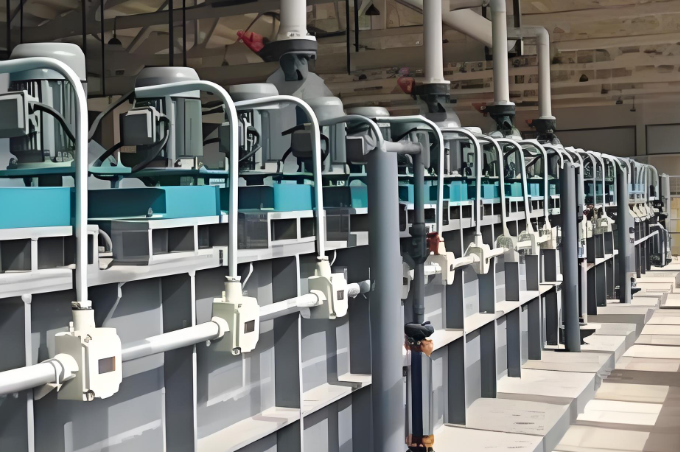NEWS&EVENTS
Home > News&Events > Company news > The difference between extraction and electrolysis in gold and silver purification
In the field of gold and silver purification, extraction equipment and electrolysis equipment are the two core process carriers, supporting the extraction method and electrolysis method respectively. The advantages and disadvantages of the two are as follows:

The extraction method relies on extraction equipment and has significant advantages. First, the equipment gives the process high flexibility, can efficiently process low-grade gold and silver raw materials, and extract the target metal by adjusting parameters. Second, the multi-stage countercurrent extraction design can efficiently separate gold and silver from platinum group metals and improve the purity of gold and silver. Third, the extractant can be recycled and cooperated with the automation system to reduce production costs. However, it also has disadvantages. It has high requirements for the selectivity of the extractant, and the equipment structure and process parameters need to be optimized for different metals, which increases the complexity and cost of operation; when the organic phase and the aqueous phase are separated, the turbulence inside the equipment may cause emulsification, which requires special equipment to handle.
The electrolysis method relies on electrolysis equipment and has outstanding advantages. The equipment can accurately control the current density and electrolysis time to produce gold and silver products with a purity of 99.99%, meeting high-end needs; using high-efficiency conductive materials and optimizing the tank structure, the current efficiency exceeds 95%, shortening the purification cycle; the electrolyte can be reused, and the waste liquid treatment device can reduce emissions by more than 90%. However, the disadvantage is that it has extremely high requirements for raw material purity and is only suitable for high-purity raw materials, otherwise additional pre-treatment equipment is required; it needs to be made of corrosion-resistant materials, with a large initial investment, and the constant temperature control system and rectifier have high energy consumption; the electrolysis process must strictly limit the co-deposition of platinum group metals to avoid impurities affecting quality.
In summary, the two complement each other in the field of gold and silver purification. Enterprises should choose appropriate equipment combinations or process routes based on raw material characteristics, cost budgets and environmental protection requirements.